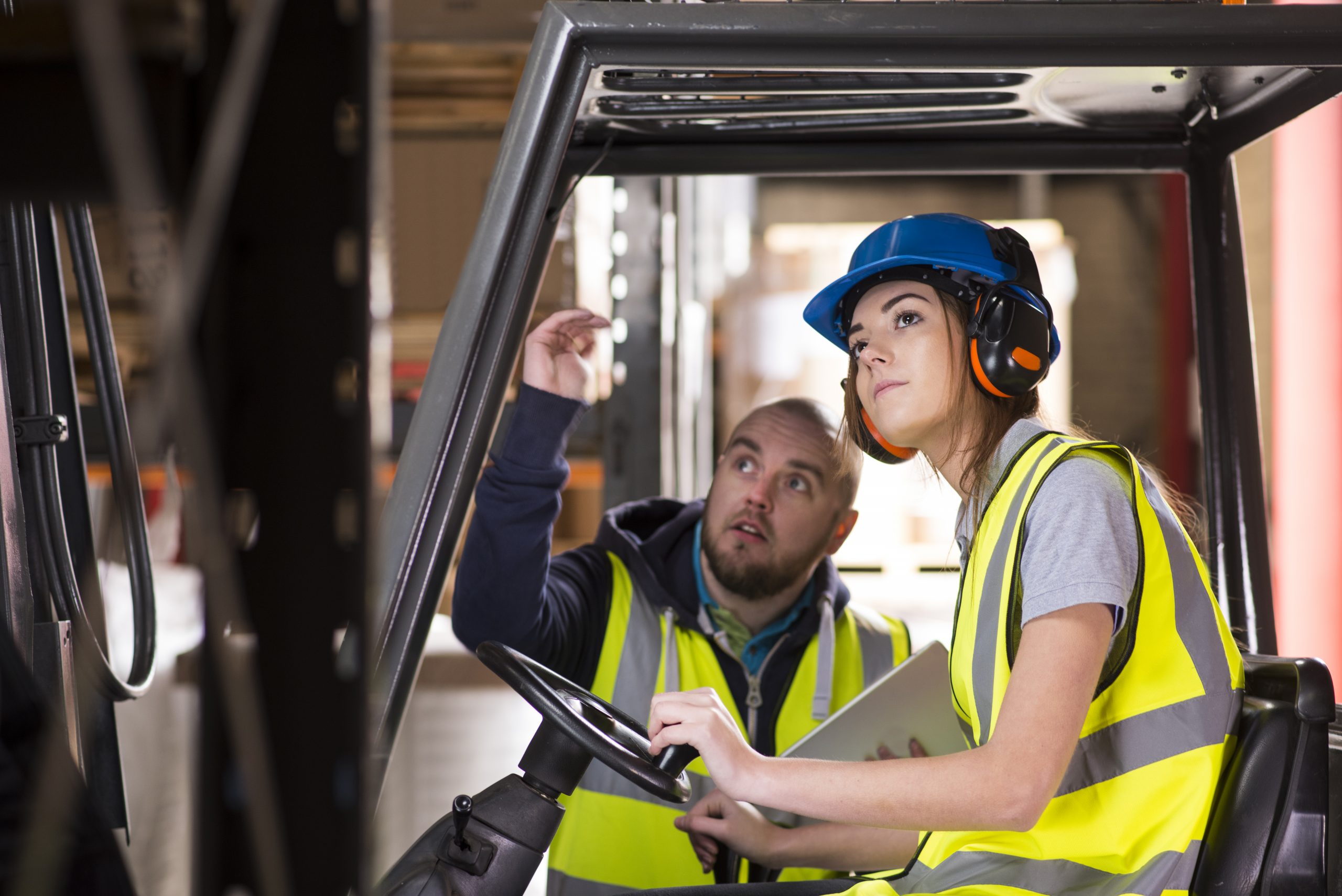Workers take notice when large pieces of heavy machinery are brought onto a worksite to complete part of a project. These machines require special attention, loading and unloading requirements, use by specific operators, careful operation procedures, and plenty of space. They make their presence known as soon as they show up and workers snap to attention and stay alert while working around them.
So where is this attention from workers when it comes to the other machinery around a site or warehouse that also requires dedicated attention and procedures for proper use and safety? Employers may not feel this question applies to their worksite. But consider the piece of equipment with one of the higher injury rates—the forklift.
Forklifts are complex and important pieces of equipment that get used day to day and by multiple operators. But workers feel more comfortable and relaxed letting forklifts blend into the background noise of their tasks. And that’s when injuries happen.
Organizations that regularly use forklifts should employ these five tips to cut down on injuries and incidents while improving the overall safety at their worksites and warehouses.
Ensure Operators are Certified
It seems obvious but it bears reinforcing. The only people operating forklifts should be certified operators and trainees under the direct supervision of certified operators. There is a strong temptation to allow the first able body to jump into the driver’s seat and move some materials or equipment quickly when crews are backed up and under deadline. But allowing this practice undercuts an organization’s culture of safety, unduly places workers at risk, and increases an organization’s risk of exposure to major OSHA fines. It is always better for all parties to only allow properly trained and certified workers to use forklifts.
Encourage Communication and Alertness
Distractions cause accidents. Operators and affected workers both need to stay alert and free from distraction while forklifts are in use. It’s important that supervisors encourage operators to communicate with each other and with their supervisors about how they are feeling and whether they are able to stay alert while driving. This includes supervisors staying on top of operators to take their breaks to make sure operators are properly rested rather than being run down in the driver’s seat.
Operators also need to employ methods to alert those around the site that a forklift is in operation. This includes using appropriate audible and visual alerting devices, verbal warnings, hand signals, or a combination of all of the above. This helps everyone stay aware of where the forklifts are, which path they’re taking, and reduces sudden accidents.
Only Operators in the Driver’s Seat
Part of reducing distractions means limiting what operators bring with them onto the forklift. Operators should not take snacks, drinks, devices, music, or any other items that could pull their focus at a crucial moment in time. Even documents, scanners, and other seemingly important work items should be reduced to only those items absolutely necessary for the task at hand. Other workers can trail or meet forklift operators at the site to ensure items and procedures are properly cataloged and checked before the operator lifts the items they’re moving. This allows the operator to maintain concentration and establishes checks and balances to ensure safety without placing the entire responsibility on the operator.
Forklift Checks and Balances
An operator can take every precaution but they’re still at the mercy of the machine they use. Forklift maintenance schedules should be routine and closely followed before operators enter the lift. Make sure fluids are properly filled and that tanks are free from leaks or loose connectors. The forks should be straight, free from cracks, and level. Operators and supervisors should also regularly test the tire pressure, brakes, lights, horns, backup alarms, and steering wheel. All of these precautions are necessary to keep the equipment in working order and keep everyone around the equipment safe.
Employ Safety Messaging and Markers
Proper signage around a facility is a daily reminder about safety expectations. Signs, messages, paths, and posted indicators should be integrated with the flow of the worksite or warehouse. This helps streamline the work processes while promoting a safer working environment to strengthen a workplace’s culture of safety. Every person in the area should be able to clearly determine where and how they can safely maneuver throughout the site without being surprised by a sudden forklift. Clearly delineating lanes for forklifts, employees, and pedestrians is a smart work habit that improves work flows and promotes safety.
Keeping employees and operators safe around forklifts is all about staying mindful, present, and alert. Instilling these behaviors requires diligence on the part of employers, supervisors, and employees. But it can also be bolstered through comprehensive safety education. Optimum Safety Management provides workshops and materials through the OptimumOnline training platform to assist supervisors in keeping both workers and operators informed, educated, and safe on the job. Optimum provides detailed training for specific hazards, proper operation procedures, and even provides forklift operation certification. Organizations who team with OSM receive the full support of a team of safety management experts to keep workers, supervisors, and operators safe and alert around forklifts, heavy machinery, and other potential workplace hazards.
Optimum Safety Management provides the information and services to help companies develop safety leaders and improve overall safety performance. For more information on how Optimum Safety Management can assist with your businesses’ safety needs, contact an expert today, or reach out via phone at 630-759-9908.
Continue reading more safety tips and insights









